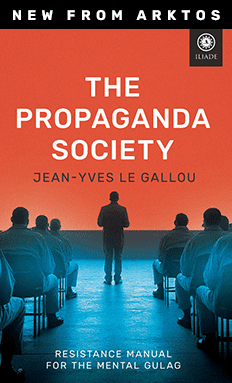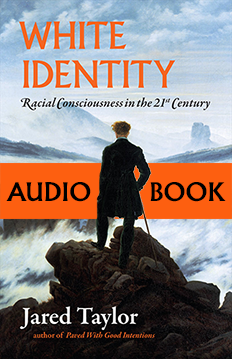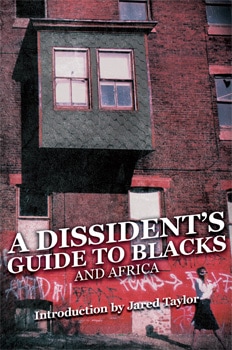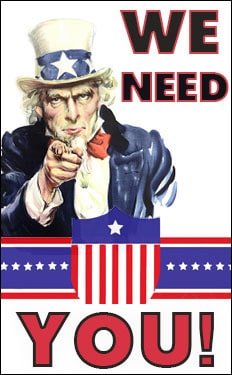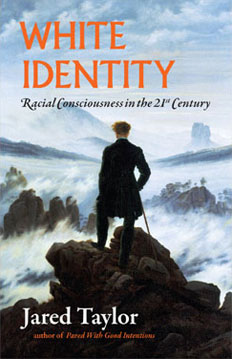The Inadequacy of the Term “Asian American”
Li Zhou, Vox, May 5, 2021
Sarath Suong has often felt like the term “Asian American” doesn’t really serve him.
A Cambodian refugee who immigrated to the US as a child, Suong prefers to identify as Southeast Asian instead.
“I was told that I am Asian American when we came here,” he says. “But I faced a lot of colorism, a lot of classism, and not a lot of understanding about who Southeast Asians are and how we fit into the Asian American context.”
Suong’s family was among tens of thousands of refugees who fled during the Khmer Rouge regime in Cambodia, eventually settling in the Boston area. When he arrived in the US, he struggled to find his footing in a country where everyone from teachers to neighbors made him feel unwelcome.
{snip}
As white writers pushed the idea of the “model minority myth” — a racist trope that suggests that all Asian Americans are well off and pits them against other groups — Suong feared for his friends’ deportations and violence at the hands of cops. And as he advocated for more resources in Southeast Asian neighborhoods, he didn’t always feel heard by other Asian Americans, either.
“Trying to enter spaces with predominantly wealthy, light-skinned East Asians, there was a dismissal of us,” he said.
All this has led Suong, now 40 and the head of the Southeast Asian Freedom Network, to be wary of such a sweeping category — and how it excludes some of its most vulnerable members.
While Asian American was a term established by activists in the 1960s as a means to build political power, it’s also been criticized for obscuring the immense diversity among those it purports to cover, centering East Asians and preventing specific ethnic groups from getting the policy support they need. Asian Americans not only have the largest income gap of any racial group but also massive health care, education, and economic disparities that rarely get addressed. Cambodian refugees like Suong, and Southeast Asians in particular, are among those who’ve been overlooked: 19 percent of Cambodians live in poverty in the US, compared to 12 percent of Asian people and 15 percent of all people.
In the 1980s and ’90s the classification was broadened even further via the term Asian American and Pacific Islander, or AAPI, a decision that’s proven contentious as well. {snip}
The term AAPI is also meant to be inclusive, but its usage — by government agencies in particular — has had the opposite effect.
“AAPI is incredibly ambitious. It contends to cover and speak for some of the largest regions in the world,” says Tavae Samuelu, the executive director of Empowering Pacific Islander Communities. “In some ways, marginalization and erasure feel inevitable.”
The terms Asian American and AAPI, in their most idealized versions, have at times historically served as a unifying banner for a wide range of communities to work together toward a common cause. They signify, too, a sense of shared experience tied to what it’s like to be an immigrant, or part of a family of immigrants, and the xenophobia that different groups have encountered, a connection that’s been especially apparent in the wake of recent attacks targeting Asian American people during the pandemic.
“The thing that these Asian American communities [have in common] is the experience of perhaps being viewed as outsiders,” says Indiana University’s Dina Okamoto. “Maybe you arrived 10 years ago, but maybe your family has also been in the US for generations. There are experiences of being othered these communities share.”
But this connection can be tenuous and this label so broad that recent calls for data disaggregation and more visible recognition of the roughly 50 ethnic groups that make up the Asian diaspora have surfaced. In conversations with more than 20 people who spoke about their Asian American identities, there was a huge focus on acknowledging the different needs that various groups may have — and an emphasis on the fact that the community is no monolith.
“Are Asian Americans one or many?” asks UC Riverside political science professor Karthick Ramakrishnan. “The answer is both.”
The benefits of such a label — and who created it
The term Asian American was once a radical one.
First used by UC Berkeley student activists Emma Gee and Yuji Ichioka in 1968, “Asian American” was used to unite different communities of Asian descent in order to create a more formidable protest bloc, an approach inspired by the Black Power movement. Their strength in numbers proved more impactful than individual ethnic groups working alone, including working alongside Black and Latino students for an ethnic studies department at the college.
{snip}
The rise of the term also helped combat the use of more derogatory language that referred to people of Asian descent. Before “Asian American” was popularized, the word “Oriental,” a label that othered and exoticized those it described, was common parlance.
For many experts and organizers who spoke with Vox, that solidarity is as important now as it was back then.
“When it comes to having policy influence and exercising political power, it is absolutely essential to have an Asian American movement. Each of these groups is too small, and there are similarities,” says Ramakrishnan.
In the decades since it took off, the term is now mostly seen as a demographic marker. Today, it captures about 19 million people, up 81 percent since 2000, according to a recent Pew report — and a large immigrant population; 59 percent of all Asian Americans are immigrants, including 1.4 million of whom are undocumented. Asian Americans are the fastest-growing racial group in America, currently 5.6 percent of the county’s population but projected to be as much as 14 percent by 2065.
Prior to becoming a more established category, though, issues of immigration — and, relatedly, xenophobia — have historically bound Asian Americans closely with one another, serving as a common thread for such an expansive group.
We are “grounded in our history of exclusion laws and immigration bans,” emphasizes Ramakrishnan. “What makes us Asian is a history of exclusion.”
That history goes as far back as 1882 when Chinese immigrants were barred from becoming citizens because they were seen as competition for white workers; in 1917, Indian people were similarly barred; and by 1924, Japanese and Korean people were barred as well.
In all three cases, groups immigrated to the US as laborers and were framed as the source of economic problems, and in some cases public health ones, too. Members of ethnic groups that have more recently come to the country as refugees — including Hmong, Burmese, and Laotian people — have also faced restrictive immigration policies that have focused on deportation.
“We share … a continued history of being scapegoated for America’s ills — literally and figuratively — and never being accepted as full and equal members of society,” says Karen Umemoto, the director of the Asian American Studies Center at UCLA.
{snip}
In addition to grouping people of Asian descent under one racial category, the label expanded in the 1980s to include populations across the Pacific Ocean.
The term AAPI, which includes Pacific Islanders, took off prominently among academics and was used in the 1990 census as government officials weighed how to count the group, who had previously been categorized in individual boxes like “Hawaiian,” “Guamanian,” and “Samoan.”
“Pacific Islanders were too small of a group in the mind of key decision-makers to report separately,” says UCLA political science professor Paul Ong, who added that the presence of Asian Americans in Hawaii may have been one of the reasons the two were initially put together. Scholars also began using the term to refer to experiences with colonialism that both Asian countries and Pacific Islanders had had. The idea was to “combine forces, given we were less than 3 percent of the US population in those days,” says Umemoto, who helped form a coalition of Asian American and Pacific Islander student groups along the West Coast.
But many Native Hawaiians and Pacific Islanders argued this grouping erased their specific and current struggles. Although some Pacific Islanders are immigrants, many identify as Indigenous. {snip}
“Our race is deeply shaped by continued colonization and militarization, and they aren’t necessarily key issues for the Asian American community,” says Samuelu. ”For many Pacific Islanders, America happened without our consent.”
The AAPI category also painted over inequities that existed, making it seem as though Native Hawaiian and Pacific Islanders were overrepresented at higher education institutions like other Asian Americans when the opposite was the case. When looking at degree attainment broken out by ethnicity, 62 percent of AAPI adults 24 and older have completed an associate’s degree or higher, compared to 28 percent of Native Hawaiians and Pacific islanders of the same age.
In 1997, the Office of Management and Budget — which determines the categories used by the census — officially disaggregated the group in its data collection practices, though the label is still used by the media, academics, advocacy organizations, and some government institutions. During the pandemic, for instance, Pacific Islanders have pushed back against states’ decisions to group them together with Asian Americans, a move that’s made it tough to discern when Pacific Islanders have had much higher rates of coronavirus cases and fatalities.
{snip}
Asian Americans comprise roughly 50 ethnic groups, who speak upward of 100 languages including Indian Americans, Chinese Americans, Taiwanese Americans, Filipino Americans, Vietnamese Americans, Korean Americans, Japanese Americans, Pakistani Americans, Cambodian Americans, Hmong Americans, Thai Americans, Laotian Americans, Bangladeshi Americans, Burmese Americans, Nepalese Americans, Indonesian Americans, Sri Lankan Americans, Malaysian Americans, Bhutanese Americans, and Mongolian Americans — and that’s just some of the diversity that exists.
There are also enormous generational, religious, class, and ideological differences among these groups, as well as huge economic disparities.
According to a report from the National Community Reinvestment Coalition, the income gaps among different Asian American ethnic groups are the widest of any racial group, and they are still growing. While Indian Americans have the highest median income of $100,000, for example, Burmese Americans have the lowest, at $36,000. Similarly, there are significant disparities among Asian Americans in educational attainment and health care outcomes: 94 percent of Japanese and Taiwanese Americans have graduated high school, compared to less than 66 percent of Laotian and Hmong Americans. And 22 percent of Nepalese Americans don’t have health insurance compared to 6 percent of Japanese Americans.
{snip}
There’s a major need to recognize individual ethnic groups, and many advocates say this begins with data.
Data disaggregation as a concept sounds complex, but in practice, it’s very straightforward: In addition to gathering data about Asian Americans as a large group, the government can also gather data by ethnic group and direct other major institutions to do the same.
By doing so, policymakers would be able to better measure many of these disparities and appropriately target their responses. In the 2020 census, there is some disaggregation, though it’s not enough: The survey ultimately enables people to identify as Asian American and as other ethnic categories including Chinese, Filipino, Asian Indian, Vietnamese, Korean, Japanese, and “other.” Notably, a lot of groups are left out, including some who face the highest rates of poverty and unemployment among the Asian American diaspora, such as Cambodian, Hmong, and Bhutanese Americans. People of these backgrounds are still able to write in how they identify, which the census will report out as well.
“Our ideal solution is that all 50-plus communities have checkboxes,” says Dinh, of the Southeast Asia Resource Action Center.
The push for more disaggregation has extended to states, too. In Rhode Island, the All Students Count Act became law in 2017, requiring public schools to break out data on Asian American students by ethnicity — though activists are still fighting to make sure it’s fully implemented. In California, too, a 2016 law required the state’s public health department to disaggregate data, with the goal of providing better insurance coverage to groups that don’t have it, and to better understand how illnesses affect various groups differently. {snip}
{snip}





